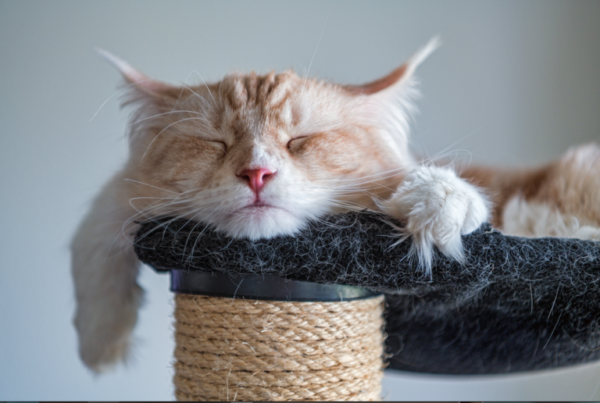Does your cat have paw problems?
by Ontario SPCA and Humane Society | Cat Care | March 7, 2019

We talk a lot about the need to protect a dog’s paws, but did you know your cat’s paws also need tender loving care?
The paw pads on the bottom of a cat’s feet are actually thickened layers of fat and tissue. They help provide traction and act as shock absorbers for bones, tendons and ligaments. Since cats use their paws for everything, including movement and playing, chance of injury is heightened.
Here are 4 facts to help keep your kitty’s paws in tip top shape from Healthy Pets’ post, Does Your Cat Have a Paw Problem?
1. Putting their paw where it doesn’t belong
Cats are naturally curious and sometimes work themselves into a tight spot. Since cats often explore uncharted territory, it is important to check their paws regularly for any cuts, sores, splinters or swellings.
According to Healthy Pets, you should pay attention to how your cat walks, as they may begin to limp and avoid walking on the injured paw. If your cat’s walk appears to be off, gently inspect the paw to check for a visible injury.
If there is blood, just like you would for a human, apply direct pressure to the wound with sterile gauze or a clean cloth. Contact your veterinarian if the bleeding continues.
If there is no bleeding or if the cut appears minor, clean the wound with an antiseptic solution that is safe for cats.
2. Ingrown nails
Did you know one of the most common paw problems in cats are ingrown nails? Ingrown nails may be caused by complications from declawing or regular trimming maintenance. If neglected, an ingrown nail will grow into the paw pad, which can be very uncomfortable for the cat and may lead to an infection. Healthy Pets recommends regular nail trims every 2-4 weeks to avoid ingrown nails. Find out how to trim your pet’s nails in this video.
3. Extra toes
“Polydactyl” is the name for a cat that has more than five toes in the front and four in the back. A polydactyl cat may have claws in unusual positions, which can prevent natural filing and result in the cat snagging its claws on objects in its path. Unfortunately, this can result in damage to both the paw and your furniture. Healthy Pets recommends trimming all polydactyl-clawed cats regularly, in addition to frequently inspecting for ingrown nails, ripped toes, infections and growth problems.
4. Unwanted hair
According to the ASPCA, long-haired cats may have hair growing in between their toes. If your cat finds this bothersome (you’ll know if they lick at the hair obsessively), trim the excess hair carefully with a small pair of rounded scissors.
Cat should be monitored regularly to reduce any potential for injury, especially those who enjoy time outdoors.
Categories
Testimonial
Three cheers for the volunteers!
Three cheers for the volunteers! Keep doing wonderful work, thank you!